Spiders are the largest group of arachnids on earth. Nearly 4,000 species have been described from North America with more are yet to be identified. The term arachnid is derived from the Greek word “Arachne” meaning spider. The group includes spiders, scorpions, ticks, mites and harvestmen (daddy longlegs). Although they look like insects, spiders aren’t. Insects have 6 legs, spiders have 8. Insects have 3 body parts – head, thorax, abdomen – spiders have two, cephalothorax (the head and thorax are fused) and abdomen.
For this note, I relied on several field guides, including “Common Spiders of North America” by Richard A. Bradley. It’s an amazing 271-page reference with 470 color illustrations. A must for anyone interested in spiders.
There are 68 families of spiders in North America so, where to begin? I’m just going to write about what I see here at our place in Skiatook.
Orb Weaver Spider
First, the orb weavers. This is a large family of spiders with several hundred species in North American. The male spider is much smaller than the female. Most of them spin circular, disk-like webs (orbs). My all-time favorite spider is the black and yellow garden spider. The large female is unmistakable. She is black or brown and yellow. The head (cephalothorax) is whitish. Her legs are held paired and are orange at the base, becoming black toward the tips. In the fall, I often run into their webs stretched across our trails. Many orb weavers build new webs daily.
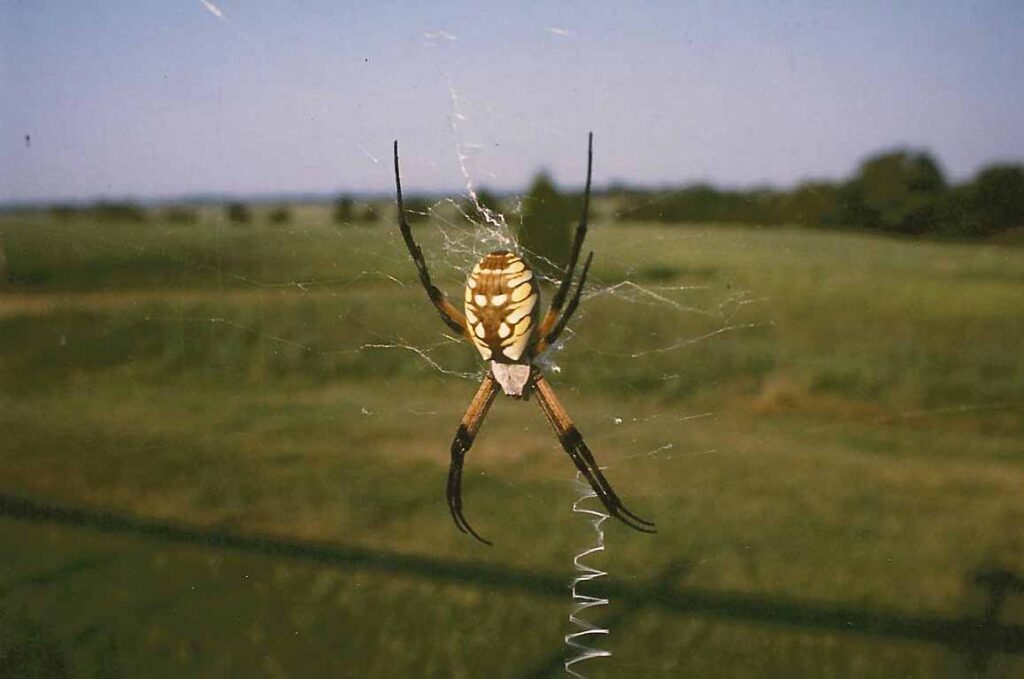

There are two other orb wavers that I see, the marbled orb weaver and the spined micrathena. The marbled orb weaver is another common spider in our area. It is smaller than the garden spider, is orange or brown and has a large, round abdomen. The spined micrathena is a small, spiky, black and white spider that looks like a burr, especially if it’s on your jeans. It’s not as common as the marbled orb weaver.
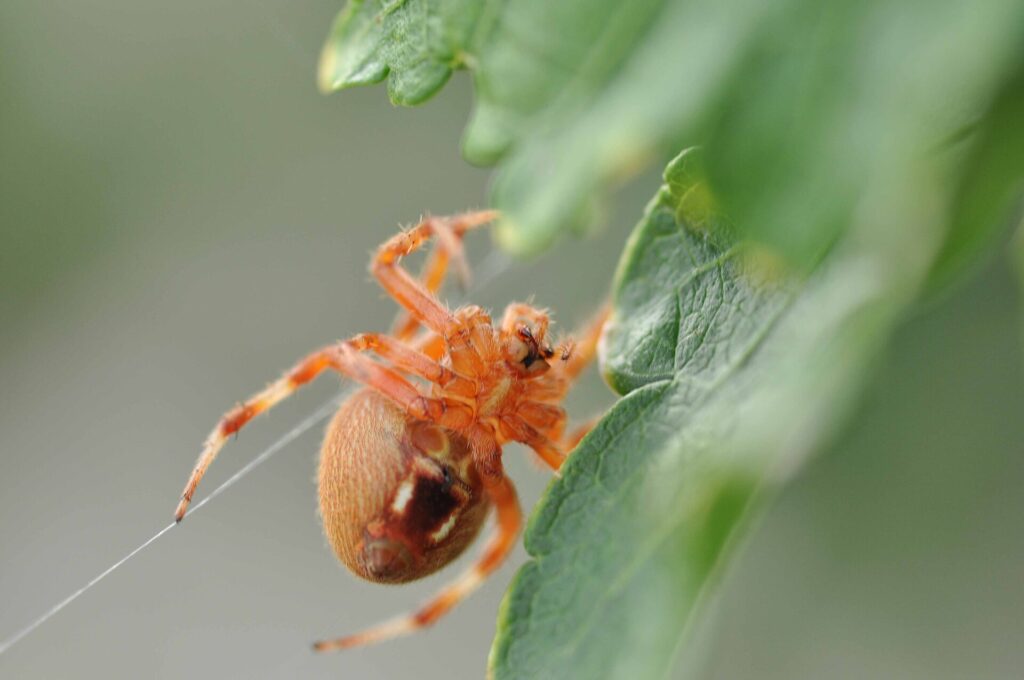

Brown Recluse Spider
The brown recluse belongs to the violin family of spiders, all of which are venomous. This is a small family with only one genus in North America. The brownish spiders are medium-sized and have an inverted violin-shaped marking on the cephalothorax. They have 6 eyes instead of 8 like other spiders.
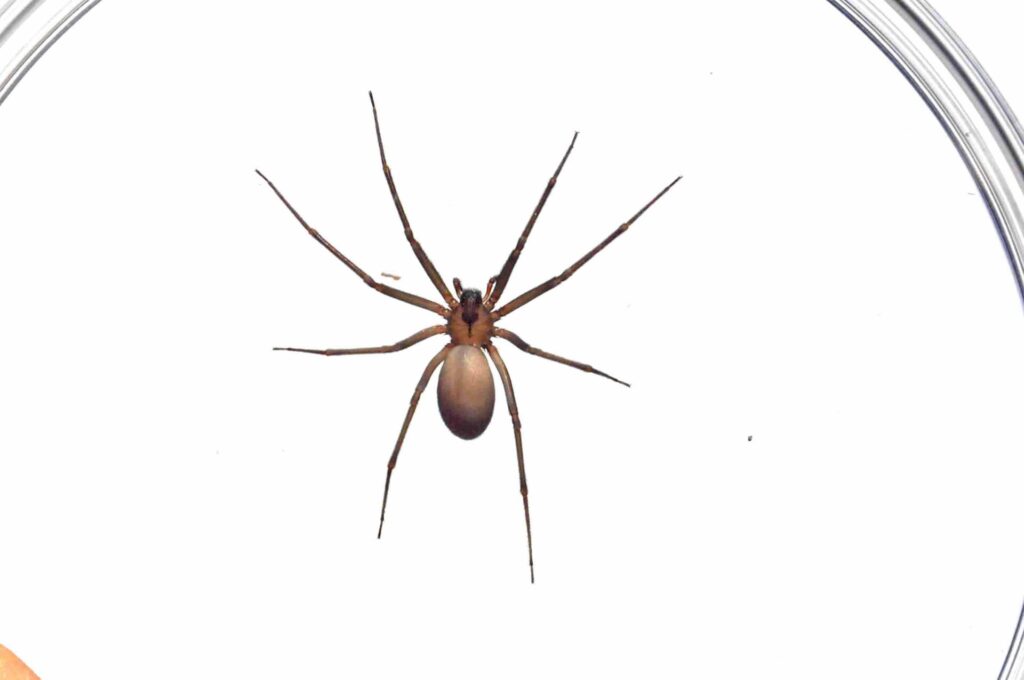
Black Widow Spider
The black widow belongs to the cobweb spider family, one of the most diverse groups of spiders worldwide. Most cobweb spiders build their webs under a covering of some sort. When the kids were young, and we camped in the Pecos Wilderness north of Santa Fe, NM, we would always check under the seat of the outhouse for black widows. That’s where they liked to hang out, and anything hanging down was apt to get bitten. The black widow’s venom is a neurotoxin. It causes violent and prolonged muscle cramping. She is recognized by a red or orange hourglass marking on her belly.
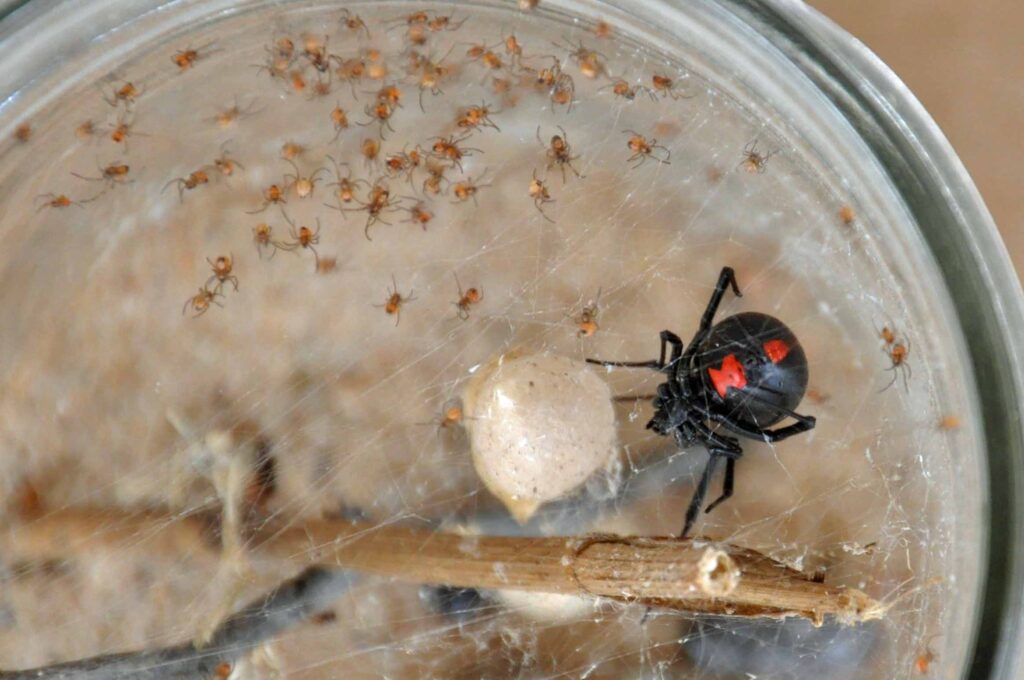
Crab Spiders
Crab spiders are often found on flowers where they lie in wait to ambush flies, bees and other pollinators that visit flowers. They have compact bodies and relatively short, thick legs that are held sideways, like those of a crab. Some of the ones that live on flowers can change their color to match that of the flower.
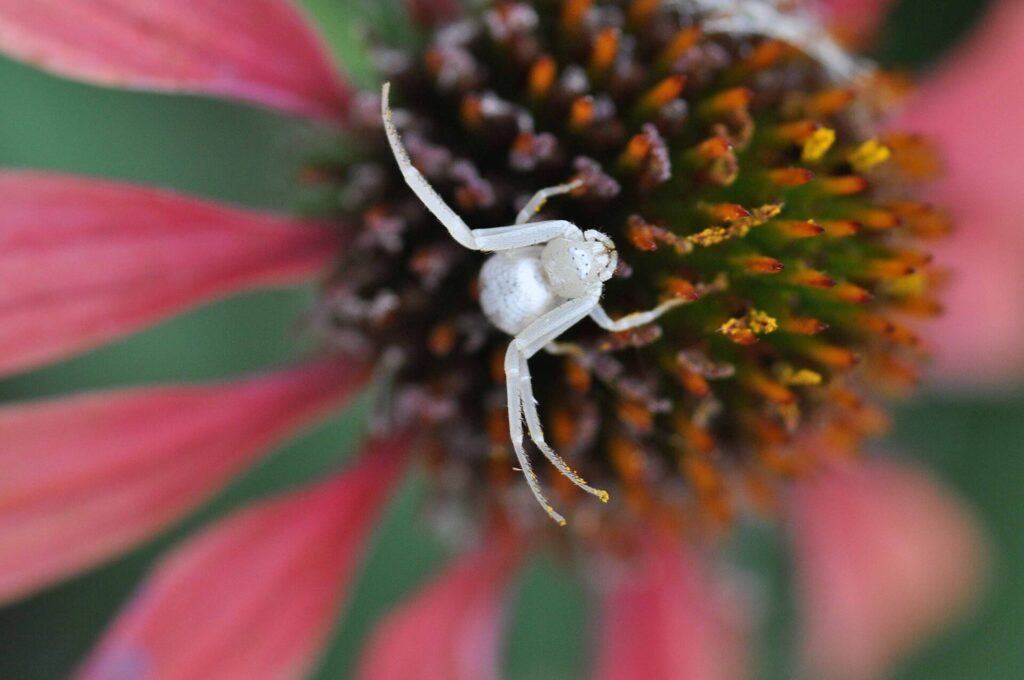
Wolf Spider
Wolf spiders live on the ground, have excellent vision and often hunt at night. Their scientific name is Lycosa, Greek for wolf. Rather than running down their prey the way a wolf does, they lie in wait for prey. Many live in burrows they make in the ground. The female will carry her egg sac and when the eggs hatch, the baby spiders will ride on her back.
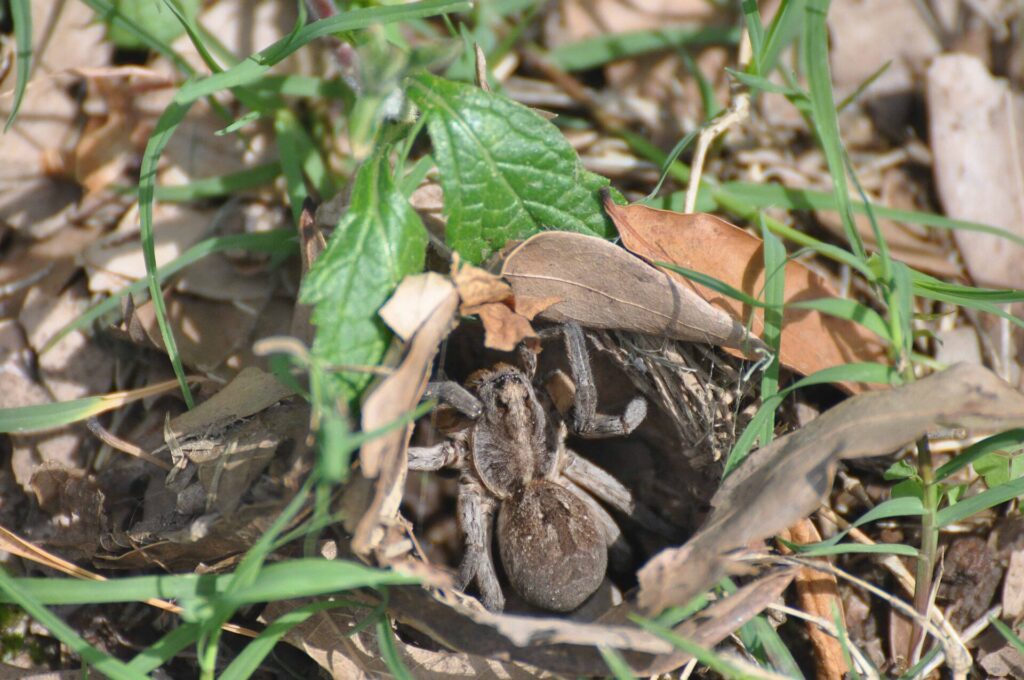
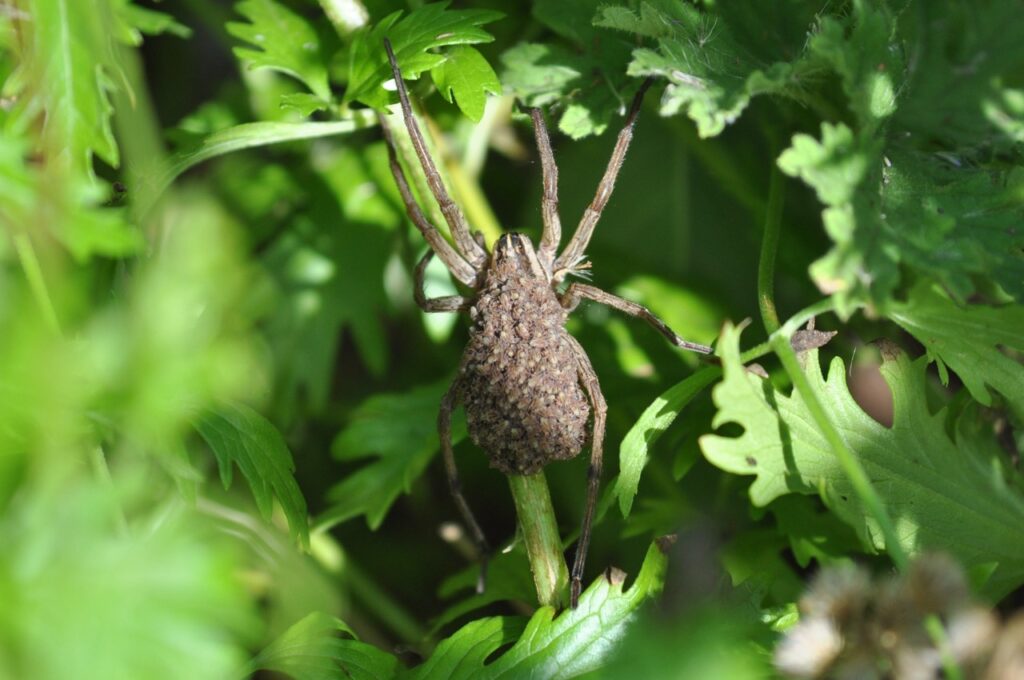
Jumping Spider
The last spider I’ll mention is the jumping spider. It is a small, keen-eyed, hunting spider that is often found indoors. We frequently find them in our house and just leave them alone or, if the weather is mild, take them to the back porch and release them on the plants. Jumping spiders are as cute as spiders get. They do not build webs, but stalk their prey, the way wolf spiders do.
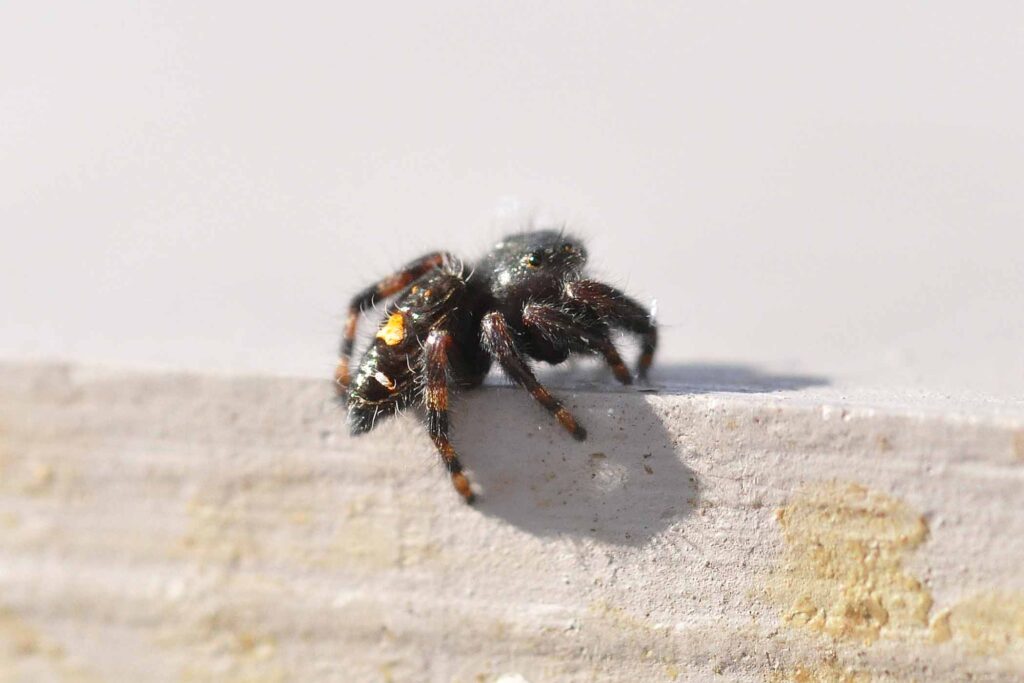
Read more Nature Notes.